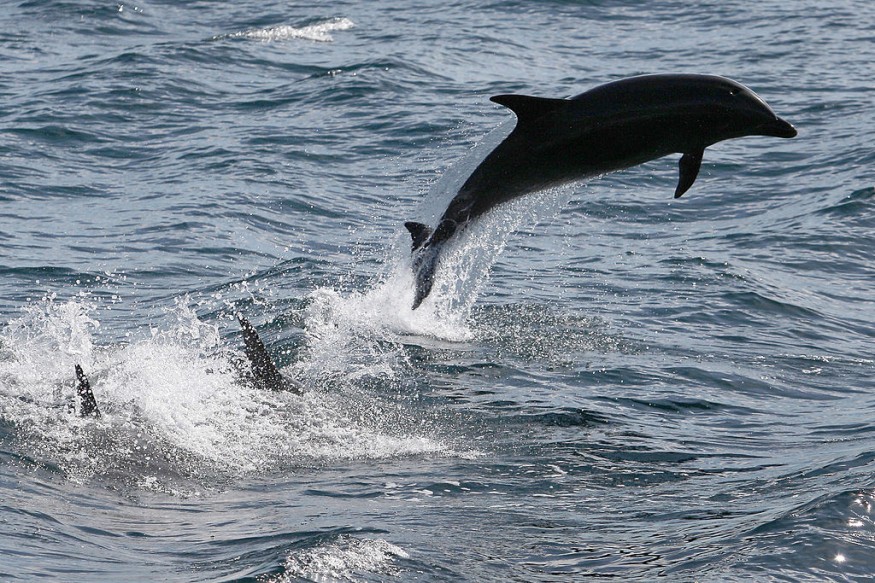Bottleneck dolphins have learned to adjust with intrusive coastal constructions, a study conclusion recently presented in the Frontiers in Marine Science.
This study is a pioneer in providing a longitudinal perspective on the cumulative effects of coastal construction activities.
Dolphins adapted to a bridge construction by building feeding areas outside of the construction zone and changing the timings of behaviors of a particular time when construction activities were reduced.
Phys.org reported marine coastal development is characterized by practices that are considered unsustainable. Specifically, coastal development reveals about 47 percent of coastal marine mammal species and 51 percent of central marine mammal habitats to wide-ranging anthropogenic disturbance.

Human Activities that Lead to Pollution, Among Others
Human activities along coastlines and marine habitats can lead to pollution, entanglement, by-catch, debris ingestion, and vessel strikes that both disturb and harm marine wildlife.
Two of the most hazardous practices of humans include dredging and pile driving. Dredging, the elimination of deposits and debris from bodies of water, is lethal to larvae and fish eggs.
On the other hand, pile driving results in severe noise pollution, interfering with the marine wildlife's behaviors.
Many fish species and cetaceans rely on sound to explore, search for prey, get rid of predators, and communicate with conspecifics.
Such practices and their impacts result in stress, deadly stranding, and acute avoidance in cetaceans. Because of exceptional levels of construction, coastal zones are reportedly turning out to be the noisiest and most threatened ecosystems on Earth. More so, as these activities are not taking place individually, they can have cumulative impacts.
Bottlenose Dolphins Observed
Bottlenose dolphins are strongly connected to their coastal habitats are more susceptible to human pressures, as it exposes them to the highest number of cumulative impacts.
As indicated in this report, Dr. Ann Weaver, John's Pass Dolphin Study/Jaasas Academic Press, Florida, investigated how bottlenose dolphins were affected by a bridge replacement construction in John's Pass, St. Petersburg, located in west-central Florida.
Essentially, John's pass is a narrow tidal inlet that connects the Gulf of Mexico and the Intracoastal Waterway. It also served as a major bottlenose dolphin habitat as it provided rich-feeding grounds. This bridge-replacement project took place in two phases over a period of five years.
For this investigation, Weaver gathered observational data numerous times each week for 11 years to acquire pre-, during, and post-construction data.
Measurements of total numbers of dolphins, presence against the absence of the dolphins, and the number of dolphins involved in predetermined behavior conditions before construction were all compared to the same gauge during and after construction.
How the Dolphins Adjusted Coastal Pollutions
The construction activity comprised pile driving and dredging that led to light and noise pollution. The research presented two ways in which animals appeared to adjust such human activities.
First, the marine animals stopped using John's Pass as a feeding site and shifted to areas outside of the construction zone.
This adaptation also resulted in a decline in social interactions between dolphins in the construction area. These behavioral changes stayed across the five-year period following the finalization of the construction and never recovered.
Second, during the construction's first phase, the dolphins changed the timings of behaviors to a time during the day when there was a minimized construction.
By the construction's second phase, the dolphins seemed to have learned to adjust to human disturbance, as their behaviors in sites being developed exhibited some change back to "pre-construction habits," said Weaver.
She added that adaptation might have been linked as well, in part, to the way construction activity was managed.
The two-phased construction exposure may have enabled the dolphins to become familiar with construction in the first phase and probably, allowed them to adjust to the so-called 'new normal' during the second phase.
Some information about bottlenose dolphins are show on the Animal Fact Files' YouTube video below:
RELATED ARTICLE: Calamity the Dolphin Who Was Saved Twice From Tangled Fishing Lines Dies Months After Partner Bucky Passed Away
Check out more news and information on Dolphins in Science Times.
© 2025 ScienceTimes.com All rights reserved. Do not reproduce without permission. The window to the world of Science Times.











